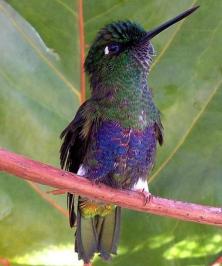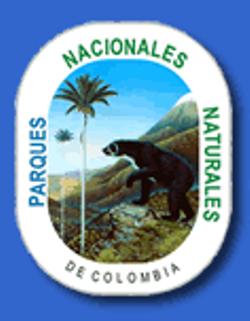Establishment: The Mirabilis-Swarovki Bird Reserve was established on May 20, 2005 in order to conserve the habitat of the Hummingbird, Colorful Puffleg (Eriocnemis mirabilis) and other endemic species of importance to the area. It is considered by the Alliance for Zero Extinction as a site AZE. Location and Area: It is located on the western slopes of the Cordillera Occidental of Colombia, in the town of El Tambo, Cauca province, 70 kilometers from the city of Popayan. This reserve is part of the buffer zone south of Munchique National Park (44,000 ha), on July 20, hamlets sectors and Huisito. (See map). The reserve covers an area of 3.405 acres and is located at an altitude range between 1,500 and 3,020 meters. Biological importance: The following species have been reported in the reserve that have some risk of extinction: the Hummingbird, Colorful Puffleg (Eriocnemis mirabilis), the Chestnut Wood-quail (Odontophorus hyperythrus), the Munchique Wood-Wren (Henicorhina negreti) and the Tanager-finch (Oreothraupis arremonops). Other important endemic species can be observed in the area, but do not have any endangered category: the Plain-breasted Hawk (Accipiter ventralis) and the Hummingbird Velvet-purple coronet (Boissonneaua Jardini), among others. Some of the possible mammal species seen in the area are Common Opossum (Didelphys marsupialis), The White-lipped Peccary (Tayassu peccary) and the tree squirrel (Sciurus sp), among others. Climate: The minimum temperature in the cold months of November and December is 12 º C and maximum temperature in the hot months of July and August is 26 º C. Conservation: Facilities: It has no accommodation for visitors. Tourist Attractions: The main attraction consists of observing wildlife in the area, mainly from groups such as birds and mammals and botanical groups such as orchids and epiphytes. Besides this activity, the reserve has suitable infrastructure for walking and observatories for high and low regions of the Biogeographic Chocó, from which in the summer the Pacific Ocean and Gorgona Island can be glimpsed. General recommendations:
Entry and visits: write to fundacion@proaves.org With the support of:
|





